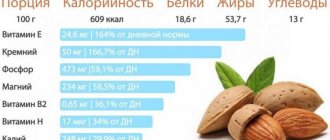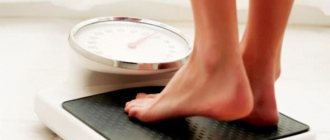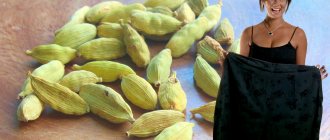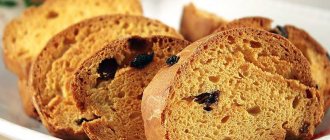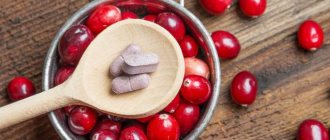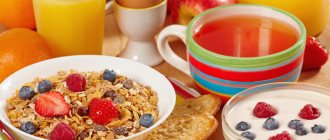How to measure flour
The exact amount of flour is especially important when making baked goods and desserts; there is no way to go wrong here. It is convenient to spoon the flour into a glass and then add it to the dough. You need to know that a tablespoon contains 30 grams of flour. Of course, it takes a long time to add flour to the dough with spoons, and you can make a mistake in counting, so it’s more convenient to pour the flour into a glass first, and then pour the glass into the dough.
The glass you need to use is cut glass. A full glass is 130 g of wheat flour. When you pour flour into a glass, do not compact it, do not shake the glass - this will allow more flour to enter, and, accordingly, the proportion will not be correct. Also note that if you need to sift flour, you should do this after measuring the required amount, because when sifting, the flour increases in volume and becomes airier, which means that in equal volumes, unsifted flour will be heavier than sifted flour. If you make a mistake at this point, you may end up with your dish in a puddle, so don’t forget about it.
Cup for measuring flour
If you have an ordinary cut glass in your kitchen, it will become a real assistant when measuring food. Its volume is 250 ml up to the rim, and this is suitable for measuring liquids. As for flour, we need to measure grams, and this is done in the following way:
- Using a spoon, carefully fill the glass to the rim. There is no need to shake and press the flour; the weight will increase significantly. Spread the product evenly over the rim and you'll have almost exactly 160 grams.
- If you fill the glass to the very brim, it will be 180 grams.
- In the case where there is a glass with only 200 ml volume, the weight will be 130 grams when filled to the rim.
This is how flour is measured in glasses. Many people make the mistake of thinking that a 200 ml glass holds 200 grams of flour, and add that much when preparing a dish. Grams and milliliters are different things. Milliliters are used to measure liquids that are denser than bulk solids.
How to measure liquid
To measure the exact amount of liquid products without using scales, the same almighty (well, almost) faceted glass will come to our aid. The standard volume of such a glass is 200 ml. To measure the required amount of liquid, you just need to pour it into a glass. It's not difficult, right? True, but do not forget that you need to pour to the very brim.
Liquid can also be measured using spoons; 18 ml of liquid is placed in a tablespoon, and 5 in a teaspoon.
However, the weight that fits into the container also depends on the density of the product. There will be 270 g of jam in a full glass, 50 g in a tablespoon; milk - 200 ml and 20 ml, respectively.
Table of weights and measures
To make calculations more convenient, you can refer to a special table that shows the grams of different utensils. The capacity of the glass can be found on the bottom, and the standard faceted glass of the USSR sample is always the same. Product measurements for spoons are given without a slide.
| Products | Glasses | Spoons | ||
| thin-walled, 250 ml | faceted, 200 ml | Dining room | Teahouse | |
| Granulated sugar | 200 | 160 | 20 | 5 |
| Coarse salt | 355 | 275 | 24 | 7 |
| Fine salt | 400 | 320 | 30 | 10 |
| Starch | 155 | 130 | 25 | 7 |
| Powdered sugar | 190 | 140 | 21 | 6 |
| Wheat flour | 160 | 130 | 24 | 7 |
| Millet | 220 | 180 | 21 | 6 |
| Rice | 245 | 185 | 24 | 7 |
Using utensils, you can measure not only bulk cereals, sugar and salt, but also ordinary products, the volume of which you need to know for some recipes. It is worth considering that the parameters may differ: so for the most accurate measurements it is best to use scales. But if mathematical accuracy is not so important, then this method will do. Approximate calculations are given in the table.
To prevent flour bugs from appearing, store flour correctly
There is flour in every home. Housewives who often pamper their family members with a variety of baked goods make…
| Products | Glasses | Spoons | ||
| Thin-walled, 250 ml | Faceted, 200 ml | Dining room | Teahouse | |
| Milk | 250 | 200 | 15 | 5 |
| Cream 10% | 250 | 200 | 15 | 5 |
| Sour cream 20% | 260 | 210 | 25 | 10 |
| Water | 250 | 200 | 15 | 5 |
| Jam | 320 | 265 | 35 | 15 |
| Peanut | 175 | 140 | 25 | 8 |
| Beans | 220 | 190 | 23 | 6 |
| Strawberry | 150 | 120 | 25 | — |
| Currant | 155 | 125 | 25 | 8 |
| Blueberry | 200 | 160 | 35 | — |
| Egg white | 253 | 207 | — | — |
| Egg yolk | 276 | 230 | — | — |
It is more convenient to carry out some measurements individually. For example, one egg contains 50-60 grams, the yolk weighs about 20, the rest is the white. An average apple weighs 200 g, an average cucumber, potato and tomato weigh 100 g each. It’s easier with products bought in the supermarket: you just need to divide the total weight by the number of ingredients - and you will get the average weight of one piece.
How to measure cereals
Cereals are the queen of dishes. It is often added to dough (for example, to bake semolina you need semolina, and for cookies you often need oatmeal), and to vegetables and meat. However, there should not be too much or too little cereal. To measure the exact weight of the required cereal, you can use (guess what...) exactly, a glass! As you understand, there is practically nothing to do in the kitchen without a cut glass without scales.
However, the glass will not contain the same amount of cereal of one type or another. Here is a small list of what and how much will fit in a glass:
- Oat flakes – 80 g
- Wheat flakes – 50 g
- Millet – 200 g
- Buckwheat – 165 g
- Semolina – 160 g
- Pearl barley – 185 g
- Barley groats – 145 g
- Hercules – 50 g
If you don’t need a lot of cereal, you can use a tablespoon. One tablespoon is 25 g of rolled oats, semolina, buckwheat, pearl barley, millet and rice.
Features of measuring weight with a glass
Also check out these articles
- Application of remotely controlled pipeline fittings in agriculture
- Why tomatoes grow poorly and what to do
- Edilbaevskaya breed of sheep
- How to get rid of ants
The measure of a glass may not correspond to the mass of a liquid or bulk product, because these are different definitions. Considering the density of the ingredient, its features, the weight will differ. For example, butter and liquid honey weigh differently due to different densities - this is important to consider! In order for the mass to be always accurate when measuring, it is worth knowing certain subtleties.
- The exact weight of water is obtained only if it is poured to the top of the container.
- Bulk ingredients cannot be compacted by hand; they must be free in the glass. Perhaps when adding flour it is worth checking to see if any voids have formed. To do this, simply stir the flour into the container with a spoon.
- To prevent viscous products from forming voids when measuring them, it is worth putting them on a spoon, and not just pouring them from the main container.
When pouring flour, it is worth checking whether voids have formed
The weight of a product is affected by many indicators, including humidity and density. Below we discuss in detail how many grams are in a faceted glass of various berries, cereals, nuts, liquids, etc.
Important!
A cut glass is always made of durable and thick glass. Such a reliable vessel, even when hitting the floor, does not always crack. This is one of the reasons for its popularity to this day.
How to measure sugar
Sugar is needed almost everywhere, but it is needed only in carefully measured quantities. If you need a lot of sugar, then we have a magical faceted glass at our service - it holds 180 g of granulated sugar.
If you don’t need a lot of sugar, a tablespoon will come to the rescue - 25g of sugar will fit in it
You can even measure lump sugar into glasses! There is no need to crush it for this - 140 g of lump sugar fits in a glass.
How many foods fit in a tablespoon/teaspoon?
The volume of a standard tablespoon is 18 ml. It is this figure that is taken as the basis when compiling culinary recipes. Cutlery made abroad may have a larger or smaller volume - from 14 to 20 ml. But still, let's build on Russian standards.
The situation is exactly the same with a teaspoon. Its standard volume is 5 ml. However, due to different designs, this figure can vary from 3 to 6 milliliters. After all, spoons can be a little larger and a little less deep, have a rounded or oval shape.
The mass of the product being measured depends on its density, viscosity and texture. For example, liquids that have approximately the same structure will also have equal weight. Solids may be heaped or unheaped, which will affect the resulting measurements.
A table indicating the amount of liquid products in ml per 1 tablespoon (volume 18 milliliters) and teaspoon (volume 5 milliliters::
| Product name | Amount in ml | |
| holds a tablespoon | holds a teaspoon | |
| sunflower oil | 18 | 5 |
| vinegar essence | 18 | 5 |
| condensed milk with sugar | 19 | 6 |
| melted butter | 18 | 5 |
| heavy cream | 22 | 7 |
| fat sour cream | 20 | 6 |
| fruit syrup | 18 | 5 |
| linseed oil | 18 | 5 |
| milk | 18 | 5 |
| thick honey | 20 | 6 |
| tomato paste | 21 | 7 |
| water | 18 | 5 |
Of course, if you measure the amount of cereals, butter and sour cream with one or two spoons, the difference will not be very significant, but if we are talking about large volumes, then accuracy is needed.
Those who bake frequently will find it useful to know the exact weight of yeast, sugar and flour used as ingredients, measured in tablespoons and teaspoons.
Advice for novice housewives! Before adding flour, be sure to sift it; enriching this ingredient with oxygen will make the finished baked goods airy and soft. Products for preparing the dough should be at room temperature; remove them from the refrigerator in advance. Do not avoid such a stage as proofing, then the pies will rise well and bake better.
Table of mass of bulk products in grams in a teaspoon and a tablespoon:
| Product name | Weight held by a tablespoon in grams | Weight held by a teaspoon in grams |
| without slide/with slide | without slide/with slide | |
| dry yeast | 10/12 | 3/5 |
| fresh yeast | 20/27 | 7/10 |
| sugar | 20/25 | 5/8 |
| flour | 20/30 | 9/12 |
| "extra" salt | 22/28 | 7/10 |
| baking soda | 22/28 | 5/8 |
| ground coffee | 15/20 | 4/7 |
| cinnamon powder | 15/20 | 5/8 |
| lemon acid | 12/16 | 5/8 |
| granulated gelatin | 10/15 | 5/8 |
| cocoa powder | 20/25 | 6/9 |
Lifehacks
Flour can be measured in any container, just know the volume of the container, and then we will tell you: 100 ml contains approximately 64 grams of flour, 150 - 96 g, 180 - 115 g, and 300 ml - 190 grams of flour. Then it's a matter of simple mathematics and a calculator.
Tip: when measuring products for cooking, if the order is not important, start with dry products: flour, cereals, sugar. If a certain amount of product remains on the walls of the container, later, when adding liquid ingredients, you will mix this amount into the dough - this way nothing will be wasted.
Enjoy cooking even without a scale! We hope this article will help you understand weights and measures, and there will be no more liquid pies due to a small amount of flour, or over-sweetened dishes.
Weight of solids in a cut glass
We recommend reading our other articles
- Chinese cabbage
- Grape variety Isabella
- Tomato variety Gina
- Raspberry variety Caramel
How many grams are in a cut glass of certain solid foods? This question is asked by many housewives. Even knowing how much flour or sour cream is in a glass, it is difficult to determine the weight of beans or walnuts in the same container, because they have a different density and do not fully fill the glass. The table below will make it easier to determine the weight of different solid ingredients.
| Product | Weight to rim (g) | Weight to top (g) |
| Vermicelli | 190 | 230 |
| Peas, peeled | 185 | 230 |
| Beans, peeled | 175 | 220 |
| Dried mushrooms | 80 | 100 |
| Cherry | 130 | 165 |
| Raspberries | 110 | 140 |
| Dried rose hips | 150 | 200 |
| Cranberry | 160 | 200 |
| Dried pears | 55 | 70 |
| Strawberry | 120 | 150 |
| Currant | 140 | 175 |
| Blackberry | 150 | 190 |
| Walnuts | 130 | 165 |
| Pine nuts | 110 | 140 |
| Hazelnut | 130 | 170 |
| Peanut | 140 | 175 |
| Almond | 130 | 160 |
| Seeds | 95 | 125 |
| Raisin | 155 | 190 |
As you can see, the weight of certain products varies significantly. But it is worth remembering that only a clean, dry container is taken to accurately calculate the weight of the components of the dishes!
Important!
With proper use and storage, a cut glass can last for many years. At the same time, it is better not to simply pour hot drinks into it, so as not to crack it. If this is necessary, you should put a teaspoon in the glass. It will take on the temperature of the liquid and the glass will not crack.

